The role of legumes in pastures in fixing N and in increasing forage N supplies is well documented (Jones 1972; Nuthall and Whiteman, 1972; Brumby, 1974). From studies widely conducted on sown pastures in Australia, Hawaii and East Africa, estimates of N fixed by tropical pasture legumes range from <50 to 560 kg ha-1 yr-1 with values commonly in the range 50–300 kg ha-1 yr-1 (Nutman, 1976). Peoples and Herridge (1990) and Shelton (1990) recently quoted figures of up to about 200 kg N ha-1 year-1 and between 100 and 300 kg N ha-1 year-1 respectively. Shelton stressed that good legume growth ensures high levels of N fixation in the pasture with the main pathway for transfer of fixed N to associated grass species being via the grazing animal and the senescence of leaves; the breakdown of roots and nodules are usually minor pathways. Under rubber in Malaysia it was demonstrated that 300–350 kg N ha-1 were fixed by leguminous cover crops (Hamilton and Pillay, 1941), however, Watson (1964) suggests that 110–220 kg N ha-1 year-1 is a more realistic level. In Sri Lanka, Jayawardana (1988) notes that pasture legumes can fix over 150 kg N ha-1 year-1 and suggests values up to 400 kg N ha-1 year-1 for shrub legumes like Leucaena and Gliricidia. Evans et al. (1992) suggest that productive legumes can fix between 100–200 kg N ha-1 year-1. The subject has recently been reviewed by Jayasinghe (1991). According to Whiteman (1980) it has been suggested by Henzell (1968) that under field conditions over a wide range of environments, the levels of nitrogen increment to be expected in legume-based tropical pastures are:
| kg ha-1 yr-1 | ||
| a) | high quality, high yielding pastures, maintenance fertilizer | 280–400 |
| b) | good pastures, well grown, well utilized | 170–280 |
| c) | average pasture, strongly grazed for a number of years | 55–170 |
Alternatively the beneficial effect of incorporating legumes in pastures can be expected in terms of liveweight gains per hectare. It has been suggested that although values are subject to wide variation the average increase in liveweight gain per hectare attributable to legume incorporation is more than 120 kg with a range from 23 to 396 kg (Butterworth, 1985).
In Vanuatu, (MacFarlane, 1993) on-farm applied research trials and demonstrations have illustrated that production of existing legume deficient improved grass systems (e.g. B. decumbens; B. mutica) can be improved by 20–50% or up to 250 kg liveweight gain ha-1 year-1 by oversowing recommended improved legumes to complement existing native/ naturalised legumes for an expenditure of 8,000–10,000 VT ha-1 (US$ 66.7–83.3 ha-1).
In order to assess the possibility of utilizing low cost indigenous or naturalized legumes, often with a high degree of shade tolerance, studies to compare exotic legumes (Centro, Calopo, Puero and Siratro) and indigenous legumes (hetero, sensitive plant or mimosa and vigna) in terms of yield, nitrogen fixation and nitrogen transfer when grown with companion grasses, were carried out in Western Samoa (Reynolds, 1982c). Data shown in Table 58 indicate that although not equal to the best exotic legumes, the local ones (hetero and mimosa) achieved DM yields and N fixation rates in the same range as recognized exotic pasture legumes. In Fiji, some of the lower growing legumes such as hetero, mimosa, D. triflorum and alyce clover, though of less impressive appearance, are capable of effecting better animal production than expected from cutting trial yields (Partridge, 1979). Rao and Giller (1993) recently reported on the amount of nitrogen fixed in the tropical tree legume Leucaena diversifolia and its transfer to an associated grass (Cenchrus ciliaris).
Measurement of N-fixation by five forage legumes, using acetylene-reduction assay, was reported by Sundram et al. (1986). The object of the experiment was to evaluate responses of Puero, Centro, Stylo, Calopogonium caeruleum and Desmodium ovalifolium to increasing levels of shade. Significant differences in N-fixing ability between species and an interaction between species and light intensity were demonstrated. Most species declined in N-fixing ability with increasing shade except for C. caeruleum. Taking into consideration other factors including dry-matter yield, root growth and N content, the ranking in terms of shade tolerance was: Puero, Centro, C. caeruleum, D. ovalifolium and Stylo (Halim and Othman, 1989). Cadisch et al. (1994) demonstrated the impact of legumes in improving tropical grazing systems in Brazil through the addition of symbiotically fixed N2 and by increasing plant available soil N through improved mineralisation of litter and root materials.
The advantages, in terms of animal production, of including legumes in pastures in temperate areas have been reviewed by Thompson (1979). Relative input-output energy relationships for nitrogen fertilized grass pastures and grass-legume associations are summarized in Table 59. Evans (1968) demonstrated that the amount of legume in grass-legume mixtures clearly affects the level of animal production. Crowder and Chheda (1982) suggested that the animal producer should attempt to maintain at least 30–40 percent legume in a pasture mixture to obtain optimal animal production.
Table 58. - Average annual dry matter and crude protein yields of pure grass and grass-legume mixtures (Reynolds, 1982c)
| Treatment* | Dry matter yields (kg ha-1) | Crude protein yields (kg ha-1) | Apparent (kg ha-1) | |||||
| Grass | Legume | Total | Grass | Legume | Total | N. fixation | N. transfer | |
| Tall guinea alone | 11297 | -- | 11297 | 929 | -- | 929 | - | -- |
| Tall guinea + centro | 10348 | 1924 | 12272 | 961 | 384 | 1345 | 67 | 5 |
| Tall guinea + mimosa | 10200 | 1319 | 11519 | 1006 | 189 | 1195 | 43 | 12 |
| Tall guinea + hetero | 11907 | 1490 | 13397 | 1067 | 261 | 1328 | 64 | 22 |
| Tall guinea + puero-calopo | 10860 | 4133 | 14993 | 1071 | 709 | 1780 | 136 | 23 |
| Tall guinea + vigna | 9294 | 1211 | 10505 | 919 | 202 | 1121 | 31 | -- |
| Tall guinea + Siratro | 9218 | 2453 | 11582 | 833 | 386 | 1219 | 46 | -- |
| L.S.D. (P=0.05) | 1006 | 108 | ||||||
| Cori alone | 9895 | -- | 9895 | 638 | -- | 638 | -- | -- |
| Cori + centro | 9958 | 2943 | 12901 | 721 | 460 | 1181 | 87 | 13 |
| Cori + mimosa | 10283 | 1839 | 12122 | 870 | 287 | 1157 | 83 | 37 |
| Cori + hetero | 10605 | 3234 | 13839 | 850 | 475 | 1325 | 110 | 34 |
| Cori + puerocalopo | 8875 | 5673 | 14548 | 831 | 942 | 1174 | 182 | 31 |
| Cori + vigna | 10960 | 2869 | 13829 | 903 | 522 | 1425 | 126 | 42 |
| Cori + Siratro | 10666 | 4958 | 15624 | 874 | 810 | 1684 | 167 | 38 |
| L.S.D. (P=0.05) | 2931 | 367 | ||||||
* All treatments received PK fertilizer.
Table 59. - Comparison of energy utilization between nitrogen fertilized grass pastures and grass-legume pastures (Gordan, 1980; Reid and Jung, 1982)
| Grass + 450 Kg N1 | Grass + Clover2 | |
| Total energy input (MJ) | 37,940 | 6,814 |
| Output (kg DM ha-1) | 13,200 | 9,700 |
| ME output (MJ) | 145,200 | 106,700 |
| ME output/MJ input | 3.8 | 15.7 |
1 - Five applications year-1: (kg) N 450, P2O6 90, K2O 190.
2 - One application year-1: (kg) N 60, P2O5 60, K2O 140.
Simpson and Stobbs (1981) indicated that a 20–30 percent legume DM content was optimum for animal production. More recently, Thomas (1992) suggested that the amounts of biologically fixed N required to sustain a range of herbage DM yields of 3–22 t DM ha-1 year-1 would range from 15 to 158 kg N ha-1 year-1 for tropical pastures and that legume contents of 20–45 percent of the herbage DM should provide the N requirements for a productive and sustainable pasture.
The effect on stocking rate and liveweight gain when fertilizer and legumes are included in pastures is illustrated in Table 60 with data relating to the inclusion of fertilized Townsville stylo (S. humilis) into a spear grass (Heteropogon contortus) pasture in Queensland.
In Philippines, Valenzuela and Diesta (1993) reported that most native pastures are capable of producing only 15–25 kg of meat per year. With the introduction of adaptable legumes carrying capacity was doubled and meat produced ha-1 substantially increased (e.g. native + Cook stylo: average daily gain 0.26 kg head-1 day-1 at 1.0 AU ha-1; native + Centro: 0.25 kg head-1 day-1 at 1.0 AU ha-1.
Table 60. - The influence of fertilizer and the inclusion of a legume on animal production (Jones, 1972: Shaw and 't Mannetje, 1970)
| Treatment | Stocking rate (animal ha-1) | Gain (kg head-1) | Gain (kg ha-1) |
| Spear grass | 0.61 | 47 | 29 |
| Spear grass + fertilizer | 0.61 | 100 | 62 |
| Spear grass + Townsville stylo | 0.74 | 121 | 93 |
| Spear grass + Townsville stylo + fertilizer | 0.95 | 149 | 148 |
Mean of seven year period 1959–1966.
The descriptions and details in this section have been kept brief and reference should be made particularly to Bodgan (1977), Evans and MacFarlane (1990), Evans et al. (1992), Humphreys (1974), MacFarlane et al. (1991), Plucknett (1979), Skerman (1977) and Skerman and Riveros (1990) for more information. Other sources include Anon. (1974, 1975a), de Geus (1977), Guzman (1974, 1975), Guzman and Allo (1975), Humphreys (1978), Ohler (1984), Steel at al. (1980), Whyte et al. (1953, 1959) and Whiteman (1980).
GRASSES
Axonopus affinus (Carpet or mat grass, narrow leaf carpet grass)
Axonopus compressus (Carpet or mat grass, broadleaf carpet grass).
A. affinus is a creeping perennial spreading by stolons and forming a dense low growth similar to A. compressus in most of its botanical characters, but A. compressus is more robust and stoloniferous. However, the two species cannot easily be distinguished by their general appearance because the leaf width can vary (Bodgan, 1977). Although Axonopus spp. originate from the Central and South American tropics they are now widespread. A. compressus is particularly shade tolerant (Suwanarak, 1987) although it has been suggested that survival of this species in plantation grazing systems may be due more to its prostrate growth habit rather than to particular adaptation to shading below 50 percent light transmission. It has become naturalized in many countries and is probably the most frequent and widespread natural pasture grass under coconuts (Plucknett, 1979). It can thrive on a range of soil conditions and is grazed in Costa Rica, Fiji, Ivory Coast, Jamaica, Malaysia, Papua New Guinea, Philippines, Sri Lanka, Solomon Islands, Thailand, Tonga and Vanuatu. (Chen and Ibrahim, 1983; Coulon et al., 1983; Litscher and Whiteman, 1982; Somarriba, 1988b; Watson and Whiteman, 1981a). It forms a very dense mat (see Figure 52) and grows well with hetero (D. heterophyllum), sensitive plant (M. pudica), alyce clover (A. vaginalis) and D. triflorum but because it is shallow rooted it may die back in the dry season. Dry matter yields are generally low, in the range of 2,000–2,500 kg ha-1 and it is outyielded by more productive grasses in less heavily shaded areas, provided the level of management is sufficiently high to ensure persistence of sown grasses (Smith and Whiteman, 1983a). Kaligis (1991) noted dry mater yields of only 1350 kg DM ha-1 year-1 in North Sulawesi. Although not recommended for planting it should be accepted as a useful forage where it grows under very shady conditions (light transmission 30– 50%, Smith et al., 1981; Steel and Whiteman, 1980). It can withstand heavy grazing pressure and trampling, is well accepted by stock, producing moderate liveweight gains (Reynolds, 1981) and tends to smother weeds allowing coconuts to be easily located. MacFarlane et al. (1991) suggest that carpet grass should be maintained at a height of 10–15 cm.

Figure 52. - Axonopus compressus (Carpet or mat grass).
In a trial under coconuts (75% light transmission) with five other grasses and two legumes, Kaligis and Mamonto (1991) noted that A. compressus had the highest digestibility of all species in spite of a regrowth period of 12 weeks. The relatively high nutritive value of A. compressus was also reported earlier by Samarakoon et al. (1990a). Intake by goats was also higher than for other grasses.
The increase of this species (and P. conjugatum) with grazing has been recorded in plantations in Ivory Coast (Anon., 1976c), Malaysia (Chen et al., 1978), Solomon Islands (Green and Foale, 1961; Watson and Whiteman, 1981a) and Papua New Guinea (Hill, 1969). It has been reported that under coconuts (light transmission 60%) a carpet grass pasture with legumes produced over 400 kg ha-1 yr-1 of liveweight gain, suggesting that when dominant it would be better to incorporate legumes rather than replacing the grass (Watson and Whiteman, 1981a).
In Fiji, A. compressus has been considered to be a useful feed, (Parham, 1955), especially if growing in association with sensitive plant (Mimosa pudica). In Thailand, Duryaprapan and Boonklinkajorn (1977) found that Axonopus compressus and Paspalum conjugatum produced green matter yields of 18 and 19 t ha-1 respectively, compared with 24 t ha-1 for Brachiaria brizantha, under the shady conditions of a coconut plantation. Satjipanon (1991) noted that it was relished by cattle, was tolerant of grazing and very tolerant of shading, being found especially in the south of Thailand in rubber and coconut plantations. Nutritive value measurements indicate a high digestibility compared to Stenotaphrum secundatum (Samarakoon et al., 1990a).
The only similar or superior grass species under these conditions are buffalo couch (S. secundatum), Pemba grass (S. dimidiatum) and possibly Batiki Blue (I. aristatum). It has been shown that A. compressus was outyielded by I. aristatum at 40 percent and 31 percent and by S. secundatum at 40 and 20 percent light transmission (Smith et al., 1981; Smith and Whiteman, 1983a). A. compressus may also be an indicator of low soil fertility or overgrazing (Steel et al., 1980) as demonstrated in Fiji where it invaded old B. mutica pastures (Roberts, 1970a). Evans and MacFarlane (1990) note that it frequently invades improved grass pastures where soil nitrogen is sub-optimal.
Brachiaria brizantha (Palisade grass)
Brachiaria decumbens cv. Basilisk (Signal grass)
Coarse, stoloniferous, perennial grass with hairy leaves and sub-erect to erect stems up to about 80 cm to 1 m high (see Figure 53). According to Bodgan (1977) there is some confusion in the naming of Brachiaria spp. in that B. brizantha and B. decumbens are often recognized as separate species, while the Brachiaria spp. is very variable. Probably they are slightly differing forms of the same species. (The wide morphological diversity of the Brachiaria genus, and in particular B. brizantha which overlaps with B. ruziziensis and B. decumbens, was described recently by Do Valle et al. 1993). Signal grass spreads rapidly from stolons which root readily from the nodes, and has a distinctive inflorescence - a panicle of 2–3 racemes attached at right angles, thus the common name Signal grass.
According to Steel et al. (1980) B. brizantha is now recognized as a more upright form of B. decumbens and is not a separate species.
Skerman and Riveros (1990) indicate that it differs from B. decumbens in having longer spikelets and the spikelets have a sub-apical fringe of long purplish hairs.
The Brachiaria genus is native to central and eastern Africa and is best adapted to the humid tropics with rainfall above 1,000 mm. Palisade has been widely used under coconuts, is important in Sri Lanka (Fernando, 1961; Santhirasegaram and Ferdinandez, 1967) and Western Samoa (Reynolds, 1976a, 1977a, 1978d). Cuttings of B. decumbens cv. Basilisk introduced to Western Samoa from the Solomon Islands established much more slowly than cuttings of B. brizantha already well adapted after introduction twenty or more years previously (Reynolds, 1977d). Palisade and Signal are widely recommended throughout the humid tropics under open coconut areas (light transmission > 70%). Gutteridge and Whiteman (1978) reported that Signal grew well in the reduced light under coconuts in the Solomon Islands and Powell (1982) that it grew well under coconuts in Tonga.
Moog and Faylon (1991) noted that Signal was becoming popular under coconuts in Sorsogon (Philippines) where it was considered to be more productive than para or guinea grass. In Thailand, it was used with guinea grass in a cut-and-carry system under coconuts (Boonklinkajorn, 1978a).
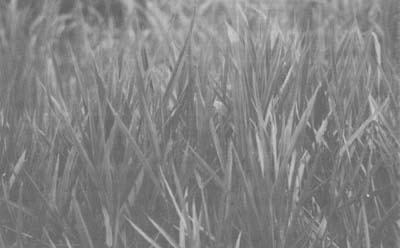
Figure 53. - Signal grass (B. decumbens).
Trials in Hawaii, confirmed the shade tolerance of Signal grass with relative yields under 100, 70, 45 and 27 percent daylight of 100, 104, 73 and 52 respectively under a plus-N treatment (365 kg N ha-1 yr-1) and 100, 93, 107 and 79 under 0 kg N ha-1 yr-1 (Eriksen and Whitney, 1981). Compared with Cori grass in the same trial, the data indicates that Signal is suited to areas with >45 percent daylight and particularly >70 percent daylight.
Halim (1992) grew Signal grass under three shade levels (0, 56% and 81%) in Malaysia. Increasing shade reduced dry matter yield from 30 to 10 t ha-1 yr-1 and under intensive shade grass yield could not be increased by N fertilization. He concluded that the use of N fertilizers under shade levels exceeding 56% may not be justifiable for Signal grass.
In Vanuatu Signal grows well under old coconuts with shade about 70 percent of full sunlight. Although it has slightly lower quality than the guineas, setaria or para grass, it can withstand higher stocking rates (Evans et al., 1992). There are a number of plantations maintaining adequate legume content in the 2–3 AU ha-1 range using Signal. Some older legume deficient Signal pastures have been successfully oversown with improved legumes by zero-till or disc strip techniques (see Section 4.10); other farmers have improved the quality of their Signal pastures simply by introducing hetero in the wet season and allowing it to spread through seed in the dung and on the hooves of cattle (Evans et al., 1992).
Under these conditions the species has good dry matter production in the range of 8,000–12,000 kg ha-1 (Boonklinkajorn, 1978; Reynolds, 1978f; Manidool 1983; Smith and Whiteman, 1983a), although in the Solomon Islands it was indicated (Skerman and Riveros, 1990) to have produced up to 30,000 kg DM ha-1 year-1 under old coconuts. Additionally, it produces an even sward of moderate height (see Figure 54), is well liked by stock, withstands heavy grazing pressure, furnishes good liveweight gains and has the considerable advantage of easy vegetative propagation from stem cuttings (Rika et al., 1981; Reynolds, 1981). Palisade and Signal are also very aggressive and tend to smother weeds in the establishment phase (Reynolds, 1978k), however, because of their vigorous growth there may be some difficulties in maintaining companion legumes unless pastures are very well managed. Centro (C. pubescens) and Siratro (M. atropurpureum) are recommended, but in some of the Pacific Islands Hetero (D. heterophyllum) and Sensitive plant (M. pudica) are often the only legumes to combine well with B. brizantha and B. decumbens (Gutteridge et al., 1976; Reynolds, 1982c), although in Vanuatu 15 year old stands of B. decumbens with high percentages of glycine (N. wightii) were observed (see Figure 55) during the August 1993 Sustainable Beef Production Workshop. Maeno (1985) working at CIAT in Colombia demonstrated that Desmodium ovalifolium, with its prostrate and vigorous growth habit, combined well with Brachiaria decumbens producing a highly productive mixture with steers making liveweight gains of 660 g animal-1 day-1. Legume proportion was low in the rainy season but reached values of around 50 percent in the dry season.

Figure 54. - B. brizantha under coconuts at Vaitele in Western Samoa.
B. decumbens cv. Basilisk has been selected and registered in Australia, where seed is also available. However, germination is low unless stored for one year or acid scarified (Rivero and Espinosa, 1988; Whiteman, 1980). Seed should be sown at 2–4 kg ha-1 into a prepared seed bed followed by light harrowing and rolling. Alternatively, pastures can be vegetatively established by planting rooted cuttings at 1 m intervals into moist soil (Evans and MacFarlane, 1990).
In Vanuatu, Signal grass was found to be inferior to Koronivia in terms of drought tolerance and its ability to tolerate heavy grazing.
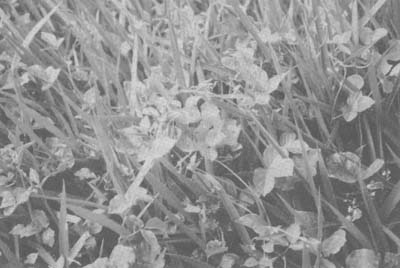
Figure 55. - A 15 year old stand of Signal grass with glycine (N. wightii), Vanuatu.
MacFarlane and Shelton (1986) recommended that Signal grass pastures should not be grazed shorter than 20 cm. More recently, MacFarlane et al. (1991) suggested that mixed Signal grass legume pastures should be maintained at around 30–40 cm height for good regrowth, but even with harder grazing and a sward of lower height good weed free stands of Signal were maintained in Tonga (see Figure 56).
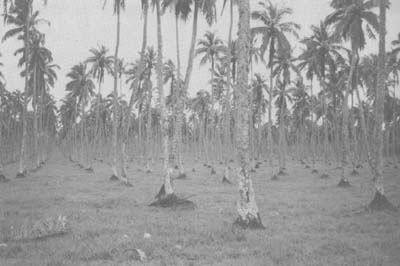
Figure 56.- Well grazed Signal grass under old coconuts, Tonga.
Several papers have referred to cases of photo-sensitization and jaundice in cattle, goats and sheep grazing Brachiaria (e.g., Armbruster, 1986; Babjee, 1987; Clarke and Clarke, 1975; Opasina, 1985). In Asia, Othman et al. (1983) reported 41 percent mortality and 100 percent morbidity in a group of 12 ewes grazing B. decumbens in Malaysia. Othman et al. (1985) also reported sheep deaths after grazing of B. decumbens, but noted less severe effects on goats while Murdiati and Lowry (1983) noted problems of photosensitization in sheep grazing or being fed silage from Brachiaria pastures in Indonesia. Moog et al. (1993) indicated that sheep grazing B. decumbens in Bicol Region of Philippines showed poor performance with a high mortality rate of 60%. Although not indicated this could be the result of photosensitization! In Africa Pierre (1984) reported an outbreak of photosensitization in the Ivory coast in 20 flocks of sheep grazing mixed pastures including B. ruziziensis. There are also many reports from S. America of photosensitization associated with Brachiaria pastures including B. brizantha (Tokarnia et al., 1979), B. decumbens (CIAT, 1984) and B. humidicola (Baber, 1989). Hegarty et al. (1986) refer to studies from S. America that attribute the disorder to the mycotoxin sporidesmin produced by the saprophytic fungus Pithomyces chartarum, indicating that the syndrome would then be essentially identical to “facial eczema” caused by the same fungus growing on perennial rye grass in New Zealand. However, the evidence is not conclusive and they suggest that the cause of Brachiaria toxicity is not yet established.
In Vanuatu, sheep grazing Signal grass suffered from the classical symptoms of photosensitization such as facial eczema, but quickly recovered once taken off (Charles Rogers, Montmartre Plantation). A possible case of photosensitization in cattle was also mentioned, but not confirmed. Cases of photosensitization have occurred in cattle (steers and especially weaners) in the Markham Valley in Papua New Guinea, where in addition to facial scabs and the more obvious symptoms, a ‘stand still’ in weaner growth was noticed. The problem was worst on N fertilized Signal grass (Shelton, personal communication). Following work reported in New Zealand to prevent pithomycotoxicosis (facial eczema) in sheep (Smith and Towers, 1984) Salam Abdullah et al. (1992) carried out a trial in Malaysia to assess the effect on Signal grass toxicity in sheep of adding zinc sulphate to the drinking water at 1 gm l-1. This reduced the incidence of B. decumbens toxicity in sheep with three out of four treated sheep showing no signs of toxicity, while all sheep in the control group developed signs of B. decumbens toxicity within 3–4 weeks of grazing the pasture and died. Although this is promising further work is needed on the problem of photosensitization. In his review Baber (1989) notes that the outbreaks are sporadic and large areas of Brachiaria pastures are being grazed without problems, but he does pose a number of key questions which should be followed up.
A Brachiaria which is closely related and very similar to B. brizantha and B. decumbens is B. ruziziensis (Ruzi grass). Although Whiteman (1980) suggested that it might be more shade tolerant than Signal, trials conducted in the Solomon Islands demonstrated that with a light transmission lower than 31 percent Signal produced a greater yield than Ruzi (Steel and Whiteman, 1980; Smith et al., 1981). Mellor et al. (1973a) reported consistently inferior liveweight gains acre-1 on Ruzi-legume compared with common Guinea grass-legume pastures, while Manidool (1983) reported that Ruzi grass was performing well under coconuts (see Figure 57) and forest plantations (Thongmee, 1992) in Thailand. Satjipanon (1994) noted that the growing of ruzi grass is widespread in Thailand because of its adaptability to a wide range of soils and because it easily produces good quality seed. Cv. Kennedy has been selected in Australia.
It is interesting that in a study of cell wall composition and digestibility, B. ruziziensis had the lowest total fibre and highest digestibility of five Brachiaria species (others were B. humidicola, B. brizantha, B. decumbens and B. dictyoneura). There was also considerable variation in quality among accessions within each species studied, especially cell wall components in B. brizantha and stem digestibility in B. humidicola (do Valle et al., 1988).

Figure 57. - Brachiaria ruziziensis established under young coconuts (< 10 years old) near Narathiwat, Thailand, for cut and carry feed.
A major constraint in South America to the wider use of Brachiaria sp. is severe spittlebug damage. On-going research has identified accessions with high levels of resistance to spittlebug which will be used in future breeding programmes (Anon., 1989).
Brachiaria humidicola cv. Tully (Koronivia grass)
A strongly stoloniferous perennial with almost hairless lanceolate leaves forming a dense sward and growing to about 20–40 cm high (see Figures 58 and 59). Also referred to as B. dictyoneura, although it has been suggested that true B. dictyoneura differs from B. humidicola, it being a tufted perennial (Bogdan, 1977). B. humidicola is indigenous to East and South-East tropical Africa where it occurs in relatively moist conditions. Reynolds (1983) reported it to be a promising species under coconuts in Zanzibar. It is one of the most widely used grasses in Fiji and has been introduced in recent years into Vanuatu (New Hebrides), Solomon Islands and Western Samoa as a shade tolerant species for coconut areas. It is moderately shade tolerant, producing yields comparable to B. decumbens under coconuts in the Solomon Islands (50–70% light transmission, dry matter yields 9,000–12,500 kg ha-1 without additional fertilization) where it is recommended for open plantations (light transmission > 70%). Although it did not produce well under coconuts with 40 and 20 percent light transmission on Banika Island (Smith and Whiteman, 1983a) or on poor soils under coconuts (light transmission 31%) at Dala, Malaita, it produced more than twice the yield (10,000 kg ha-1 year-1 dry matter) of the next best species on fertile soil under coconuts at Ri Ri, Makira, in a very shaded site (light transmission 24%). In Costa Rica B. dictyoneura was not as efficient as B. brizantha in competing for light when grown with soybean (Perez et al., 1993). Evans and MacFarlane (1990) recommended it for planting under coconuts with light transmission greater than 70 percent and Kaligis et al. (1995) rated it as the most consistent and high yielding of the prostrate grass species evaluated under cutting and grazing trials in North Sulawesi. It can withstand heavy grazing and trampling, produces good liveweight gains although it may be less palatable than other grasses (Reynolds, 1981; a view refuted by Smith et al., 1981 in a trial in the Solomons), forms a sward of moderate height in which coconuts are easily located (Plucknett, 1979) and is usually vegetatively propagated by cuttings. It was found to be particularly suited to coral soils in Fiji (Thompson, 1973; Ranacou, 1972; UNESCO, 1979), in Vanuatu (MacFarlane and Shelton, 1986) and in the Solomon Islands (Gutteridge and Whiteman, 1977b, 1978), and mixes reasonably well with Siratro (Gutteridge and Whiteman, 1978) and Neotononia wightii (Plucknett, 1979). The dense sward discourages weed development and can reduce growth of companion legumes, but in Western Samoa sensitive plant (M. pudica) usually grows with this and other grasses. Rated by Liyanage (1991) and Ibrahim and Fernandez (1993) as a promising species in Sri Lanka, it was found to outyield B. miliiformis by more than 40 percent, responded well to nitrogen fertilizer, had a high digestibility and demonstrated a high degree of drought tolerance.
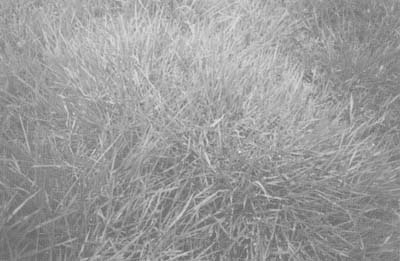
Figure 58. - Koronivia grass (Brachiaria humidicola).
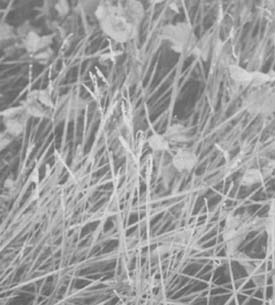
Figure 59.- Koronivia grass (Brachiaria humidicola).
In Vanuatu, twining legumes may be difficult to maintain with Koronivia under grazing and legumes such as hetero, Desmodium ovalifolium and Vigna hoseii are more suitable (Evans and MacFarlane, 1990). It is more tolerant of heavy grazing, drought and low fertility than Signal (and most of the introduced grasses) therefore it remains the main grass for smallholders (Evans et al., 1992) and manual planting of cuttings (with hetero) into carpet grass pastures is a successful way of establishment for smallholders. Establishment from seed is expensive and slow but may be used for small areas by sowing seed at 2–4 kg ha-1 into a well prepared seed bed. Koronivia produces similar levels of beef ha-1 to Signal. MacFarlane et al. (1991) suggest that it should be maintained at a height of 15–20 cm.
Brachiaria miliiformis (Brachiaria subquadripara) (Cori grass)
A creeping stoloniferous grass with slender stems 30–50 cm high, said to be an annual by Bogdan (1977), but described elsewhere as a perennial (Santhirasegaram et al., 1969). Grows naturally in Myanmar (Burma), India, Sri Lanka and Malaysia, but not widely reported in the literature except in Sri Lanka, where early work was carried out by Santhirasegaram and Ferdinandez (1967) to compare B. miliiformis with B. brizantha and where it was claimed to be the best grass for pasture development under coconuts (Perera, 1972). Cori grass outyielded B. brizantha under shade and was found to be less competitive with coconuts (Santhirasegaram, 1966b, 1967b). In recent years it has been introduced into a number of South Pacific Islands. In Thailand, under coconuts in coastal areas with poor soils and low light transmission, Cori grass showed good adaptation and was responsive to fertilizer (Boonklinkajorn, 1978a). More recently, Egara et al. (1989) reported that of nine grass species tested under coconuts and rubber B. miliiformis and B. humidicola gave the highest yield under 31 percent of full sunlight. Satjipanon (1991) noted that B. miliiformis is found in shaded areas “everywhere in Thailand”.
It is lower growing than most of the Brachiarias (see Figure 60), establishes easily and quickly from cuttings, produces moderate forage yields under coconuts (4,000– 9,000 kg ha-1 dry matter, light transmission 40 to 70%) similar to B. brizantha, but slightly lower than Signal (Appadurai, 1968; Guzman, 1974; Manidool, 1983; Reynolds, 1978f; Smith and Whiteman, 1983a; Smith et al., 1981), responds to fertilizer use (Plucknett, 1979), is not very competitive with coconuts (Santhirasegaram, 1966b, 1967b), is very palatable to cattle (Ferdinandez, 1973; Manidool, 1983) and produces good liveweight gains (Reynolds, 1981). It combines well with Centro and Puero (Ferdinandez, 1973) and in Western Samoa was also usually associated with D. heterophyllum and M. pudica (Reynolds, 1981). Eriksen and Whitney (1977, 1981) confirmed the shade tolerance of Cori grass finding that it yielded better in shade than in the open, particularly in the absence of N fertilization on soils with low N availability where N rather than light was the limiting growth factor. Relative yields under 100, 70, 45 and 27 percent full sunlight at 635 kg N were 100, 131, 111 and 72 while at 0 kg N were 100, 194, 200 and 225 respectively, which has been confirmed in Western Samoa and Zanzibar (see section 2.2). While field work has confirmed the shade tolerance of Cori grass, it also showed it to suffer grasshopper damage, and dieback after producing good first year yields. This resulted in the suggestion that B. miliiformis is better adapted to monsoonal environments (Sri Lanka) than to the humid tropical environment of the Solomons (Smith and Whiteman, 1983a; Smith et al., 1981; Steel and Whiteman, 1980). However, no such dieback was noted in Western Samoa (Reynolds, 1981) where fertilized Cori grass under good management levels is probably best suited to dairying under coconuts. Recently Waidyanatha et al. (1984) reported that B. miliiformis was the least competitive of a number of grasses grown under immature rubber (Heavea brasiliensis).
v. Brachiaria mutica (Para grass)
A perennial stoloniferous grass widely grown throughout the tropics and sub-tropics in areas with rainfall in excess of 1250 mm per annum (Whiteman, 1980). It will cease growth in dry seasons if water is not available. It has long runners which can spread rapidly, roots vigorously at the nodes, has thick hairy stems, slightly hairy leaves 10–30 cm long and 8–20 mm wide and can grow up to 1–1.5 m high (see Figure 61). Stolons may be 4 m long (Evans and MacFarlane, 1990). Probably native to Africa but naturalized in America, it is especially important in the South and Central American tropics. It is now widely cultivated in many countries amongst which are Australia, Fiji, the Philippines, Puerto Rico and Cuba. Seed production is poor and it is popular because of its ease of propagation from cuttings (hand-planted or disced), rapid establishment, high yields, quality and palatability of feed produced and tolerance of waterlogged and flooded conditions. Para should not be grazed shorter than about 45 cm average height (45–55 cm according to MacFarlane et al., 1991). In wet areas it can become a problem by blocking drainage channels.
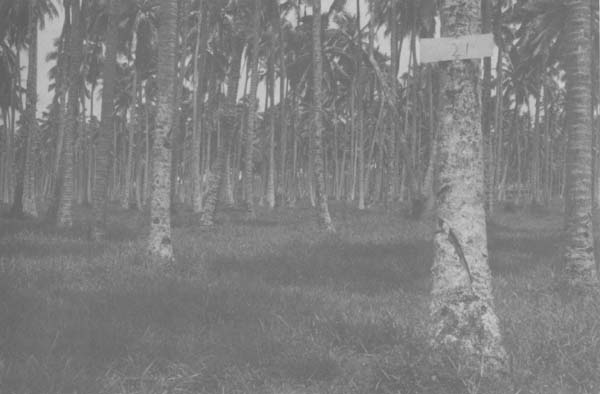
Figure 60.- Cori grass (B. miliiformis).
In terms of coconut environment the major drawback is its lack of shade tolerance. Although reported to be one of the best grasses for growing under coconuts in the Philippines (Guzman and Allo, 1975; Moog and Faylon, 1991), work in the Solomon Islands (Litscher and Whiteman, 1982; MacFarlane and Whiteman, 1980; Smith et al., 1981; Steel and Whiteman, 1980; Watson 1977; Watson and Whiteman, 1981a), Thailand (Boonklinkajorn, 1978; Manidool, 1983) and Western Samoa (Reynolds, 1978f, 1981) has demonstrated its lack of shade tolerance. In Vanuatu, its shade tolerance is rated as poor by Evans et al. (1992). Escalada and Gerona (1986) reported on the response of para-centro pastures to different fertilizer levels under 8–10 m tall coconuts (spaced at 8 × 8 m) in the Philippines. Under old coconuts (see Figure 62) in Western Samoa (light transmission higher than 80%), even though initial cattle liveweight gains were good, after eighteen months the Para pastures degraded rapidly and became weed infested (Reynolds, 1981). After two years the weed percentage was 43 compared to 14, 19 and 22 for Palisade, Cori and Batiki grasses respectively. Shortly afterwards the Para pasture was ploughed up. In the Solomon Islands, B. mutica combines well with Centro and Puero but must be well managed to prevent overgrazing (Steel et al., 1980). In fact, it went out under set stocking (Watson, 1977). In Vanuatu it will combine with phasey bean (M. lathyroides), Glenn Jointvetch (Aeschynomene americana) and greenleaf desmodium (D. intortum) in badly drained situations and with stylo, centro and puero in better drained areas (Evans and MacFarlane, 1990). In Thailand, Para grass produced well for nearly two years under 18 year old coconuts, but declined towards the end of the second year with a sharp yield reduction and weed infestation in the third year (Boonklinkajorn, 1978). In open conditions produces excellent liveweight gains (Bogdan, 1977; Steel et al., 1980), but is not generally recommended for growing under coconuts, the exception being in areas where coconuts are old and well spaced (light transmission values of >90%). Probably the most extensive areas of para pastures under coconuts are in Mindanao especially in the Davao area of Philippines where fertilized para can support three breeder cows ha-1 year-1 (Moog and Faylon, 1991).
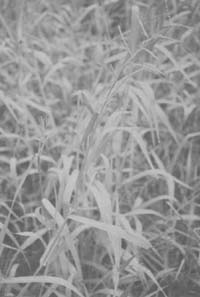
Figure 61. - Para grass (Brachiaria mutica).
Digitaria decumbens (Pangola grass)
A vigorous perennial forming tufts from long creeping stolons rooting from nodes, with stems up to about a metre in height (Bogdan, 1977; Whiteman, 1980). As no viable seed is produced, propagation is by stolon cuttings. A native of South Africa, adapted to the more humid tropical and sub-tropical summer rainfall areas (Whyte et al., 1959), D. decumbens is now widespread in the southern part of the United States, West Indies, Central America, Australia, East and West Africa, Philippines, Hawaii, India, Malaysia, Pakistan and other countries. Although very productive, responsive to nitrogen and able to withstand very heavy grazing, Pangola grass is not shade tolerant. In Florida, Adjei et al. (1998) noted that D. decumbens should not be grazed below a stubble height of 17 cm in order to conserve total non-structural carbohydrate and ensure regrowth and the maintenance of a long-term productive stand. Guzman and Allo (1975) list Pangola as a promising grass under coconuts, its use is reported from the West Indies (Anon. 1971a) and Puerto Rico (Woodroof, 1970); and in Sri Lanka, Fernandez (1978) demonstrated that D. decumbens outyielded B. miliiformis under coconuts; in Uttar Pradesh, India (Singh et al., 1990) Pangola performed particularly well under the shade of pines (Pinus roxburgii) and deodars (Cedrus deodara).

Figure 62. - Para grass under old coconuts, Western Samoa.
However, in a cutting trial under coconuts (light transmission 50%) D. decumbens demonstrated poor shade tolerance, became weed infested and disappeared under grazing (Reynolds, 1978f). Surprisingly under coconuts on Bris soils in Malaysia (33 percent light transmission) Wong et al. (1988) reported that dry matter yields of Pangola were similar to guinea, although less than Signal grass. Wong (1989) noted that D. decumbens was promising on Bris soils. Liyanage (1991) indicated that Pangola grass is suited to coconut areas in Sri Lanka with a light transmission of more than 85 percent, particularly where sheep are reared. However, it is not very shade-tolerant and has not persisted in more shaded grazed pastures. In the West Indies, Pangola was established in 14 year-old palms spaced at 10.6 m apart (equivalent to 88 palms ha-1) thus Plucknett (1979) suggests that while not suited to areas with young or closely spaced palms it could be used with C. pubescens in groves where palms are spaced widely (75 to 100 palms ha-1) or where palms are old and the canopy thin. However, with grasses like B. decumbens and B. humidicola available for open plantations, Pangola (like Para) is not generally recommended for growing under coconuts except possibly in areas where light transmission is > 90 percent.
Pangola has been seriously attacked by a rust (Puccinia oahuensis) and a stunting virus which has caused agronomists to look for substitutes or a replacement grass among the Digitaria species (Bogdan, 1977; Evans, 1972; Skerman and Riveros, 1990).
D. pentzii (Woolly finger grass) - a densely-tufted perennial that is strongly stoloniferous, the numerous runners shooting at all the nodes and rooting from some or all of them. Some botanists suggest that D. decumbens is a form of D. pentzii var. stolonifera while others disagree (Bogdan, 1977; Skerman and Riveros, 1990). Widely distributed in Southern Africa, D. pentzii has been introduced to India, Australia, Malaysia and other countries such as Brazil, Cameroon, Fiji, Philippines and Puerto Rico. In Zimbabwe it is a constituent of woodland savannah in areas with 380–640 mm of rainfall. It rarely sets seed and is propagated by stolons; is drought resistant and tolerates very heavy grazing. Reports of yields and animal production vary but generally suggest that D. pentzii is a good grazing grass comparable with Pangola if possibly somewhat less palatable. In Malaysia, Wong (1989) noted that D. pentzii was promising under coconuts on Bris soils.
D. setivalva (MARDI digit) - Wong (1989) listed it as one of a number of grasses which perform well under the high light conditions of old coconut plantations (in Malaysia).
Dichanthium aristatum (Alabang X or Angleton grass)
A short densely tufted perennial (Bogdan, 1977) but also described as a short, fine-stemmed decumbent creeping grass in the Philippines, where a local selection var. heteropogonoides produces stolons up to 3 m long in the wet season and roots at the nodes (Skerman and Riveros, 1990) and is called Alabang X. Alabang X is widely planted in Masbate and Bohol (Anon., 1974; Farinas, 1970; Guzman and Allo, 1975). According to Bor (1960), D. aristatum is possibly an ecological form of D. caricosum (Nadi Blue or Angleton grass) and Bogdan suggests that Alabang X may also in fact, be D. caricosum, although the description of Alabang X as shade tolerant (Plucknett, 1979) conflicts with the evidence of D. caricosum from elsewhere (Reynolds, personal observation; Smith and Whiteman, 1983a). D. aristatum occurs in South-East Africa, southern India and the Indian Ocean islands and is said to have been introduced to Polynesia, the West Indies, Philippines and South America (Bogdan, 1977). Parawan (1991) listed Alabang X as one of several improved grasses planted under coconuts.
A review of Angleton grass in Queensland was prepared by Bisset and Sillar (1984). Dry matter production ranged from 2.33 to 4.23 t ha-1 year-1 (with 11.2 t ha-1 in an exceptionally wet year), tolerance of seasonal waterlogging was noted and liveweight gains of 272 kg ha-1 were achieved over a 164 day period on an Angleton grass/Townsville stylo pasture fertilized with superphosphate).
Although somewhat slow to establish and susceptible to weed competition when young, Alabang X is an excellent grass because it is palatable, mixes well with legumes, is fairly drought resistant, withstands close grazing, can be vegetatively propagated, gives high animal production and can be used for green chop or as a cut-and-carry feed (Plucknett, 1979). Very light grazing has been suggested during the first year (McEvoy, 1974), while other indications are that it is best suited to soils of low fertility because on fertile soils it is readily dominated by more productive grasses (Anon., 1974: Guzman and Allo, 1975). Rarely used outside the Philippines it might be considered for poor soils under coconuts in areas of moderate shade although little quantitative information is available about its degree of shade tolerance.
Dichanthium caricosum (Nadi blue grass). Described by Skerman and Riveros (1990) as a tufted perennial and by Bogdan (1977) as an annual or creeping perennial it spreads well by vigorous stolons under moderate grazing. It has blue-tinged leaves and when the plants are young the stems are a bright mauve-blue colour (Parham, 1955). Distributed naturally in India, Myanmar (Burma) and the Malaysian region, and introduced to the Philippines, Polynesia, West Indies and South America, this creeping grass is palatable and well liked by cattle. In Fiji it is an important grass in the “dry” zone where rainfall ranges from 1,500–2,500 mm year-1 with a dry season from May to November. It is tolerant of waterlogging and has a low fertility requirement. Propagated by seed (2 kg ha-1) or vegetatively it has been established in Fiji by first burning the mission grass (Pennisetum polystachyon) and without cultivation, broadcasting the seed on the surface (Skerman and Riveros, 1990). Seed germination improves up to 9 months in storage. It combines well with various legumes - Stylosanthes hamata and Siratro and the naturalized legumes D. heterophyllum, D. triflorum, Alysicarpus vaginalis and Mimosa pudica in Fiji (Partridge, 1979). Yields of 11,500 kg DM ha-1 yr-1 were reported in Fiji by Partridge and it is very tolerant of heavy grazing. Partridge and Ranacou (1974) reported liveweight gains of 110 kg ha-1 year-1 on Nadi blue grass alone and with Siratro and superphosphate at 1 beast to 0.4 ha liveweight gains of 364 kg ha-1 yr-1. Ranacou (1986a) mentions that cattle liveweight gains can reach 0.4–0.5 kg head-1 day-1 in summer but gains may be much lower and even negative in winter, especially in dry periods. At higher stocking rates Siratro declined but naturalized legumes increased and a liveweight gain of 380 kg ha-1 year-1 at a stocking rate of 3.5 beast ha-1 was optimum (Partridge, 1979).
Although it grows well under coconuts and Pinus caribea in Fiji (Skerman and Riveros, 1990) little information is available about its degree of shade tolerance and its likely wider role as a pasture species under coconuts. However, recently, Cegumalua et al. (1993) indicated that neither Nadi blue or hetero can withstand drought, that in the wet season there is a high degree of infection by leaf rust in Nadi blue which reduces plant vigour and persistence and that some Brachiaras look more promising.
Ischaemum aristatum (Batiki Blue grass)
There are some fifty tropical or sub-tropical species of Ischaemum (Bogdan, 1977). I. aristatum is described as a perennial with erect or spreading habit (Whyte et al., 1959) while in the South Pacific it is a creeping stoloniferous perennial grass with soft hairy blue-green leaves 5–10 mm wide and 15–30 cm long (Steel et al., 1980). It is also referred to as I. indicum, although Bogdan suggests that this is an annual. It is a native of tropical Africa, India and South-East Asia and is used extensively in Fiji (Ranacou, 1972), grows well in the Solomon Islands, except on sandy or coralline soils (Steel et al., 1980) and in Western Samoa on the shaded fertile coconut soils as well as on the more acid soils above 600 m (Reynolds, 1977b, 1978a). It is a particularly shade tolerant species, producing well under coconuts (see Figure 63) in Western Samoa (light transmission 50%; Reynolds, 1978f). It has been described as productive and persistent by Litscher and Whiteman (1982) under smallholder conditions in the Solomon Islands (light transmission 50 to 55%). Batiki yielded well and maintained weed-free stands (light transmission 40–70%; Smith and Whiteman, 1983a). It can tolerate very heavy grazing and persists under a wide range of grazing management (Plucknett, 1979; Reynolds, 1978a; Smith et al., 1983). Thus it is particularly recommended for the farmer likely to employ low management levels. Probably dry matter yields will be around 5,500–8,000 kg ha-1 depending on degree of shade. Batiki is propagated by cuttings which strike readily and quickly cover bare ground with long runners (Steel et al., 1980). With B. mutica this is one of the grasses that can be established by broadcasting cuttings and discing them into the soil. Nut collection is easy because of its low, creeping habit but maintenance of a good grass-legume mixture can be difficult (Plucknett, 1979) even though it mixes well with a number of legumes in the Solomons (Steel et al., 1980). In Western Samoa common legumes in Batiki pastures are D. heterophyllum and M. pudica, and Batiki pastures in two grazing trials outyielded local pastures in terms of weight gains ha-1 by 77 and 115 percent producing moderate liveweight gains of about 300 kg ha-1 yr-1 (Reynolds, 1981). Two major drawbacks are its high nitrogen requirement, which may affect coconut yields (possible evidence of which has been reported, Plucknett, 1975; Reynolds, 1981) and its lack of tolerance of dry conditions. While there was some browning off and dieback of Batiki pastures in particularly dry periods in Western Samoa, in the more extended dry seasons experienced in Zanzibar this was more severe (Reynolds, 1983). According to Singh and Duve (1981) and Singh and Naidu (1973) I. aristatum, referred to as Balaga blue, is highly competitive leading to N and P deficiencies and appreciably reducing coconut yields, thus requiring heavy fertilizing. Surveying the nutritional status of coconuts in Fiji, they reported that where I. aristatum was present new coconut groves achieved poor growth, with extensive yellowing and decline of palms in old groves. However, in many coconut areas where light transmission is around 40–70 percent I. aristatum is still highly recommended. Related species found throughout South-East Asia and Polynesia are I. murinum and I. timorense. Hunter (1987) reported on the aggressive nature of Ischaemum indicum under humid tropical conditions in Costa Rica where it is able to dominate other grasses and plants in open (non-forested) situations. Ranacou (1986b) notes that I. indicum (Batiki blue grass) is well adapted to the poorer hill soils of the wetter parts of the main islands in Fiji, but dry matter production is seasonal. Milk production can be up to 71 cow-1 day-1 when supplemented with a coconut meal/molasses mixture, however the crude protein content of the grass is not generally above 7%.
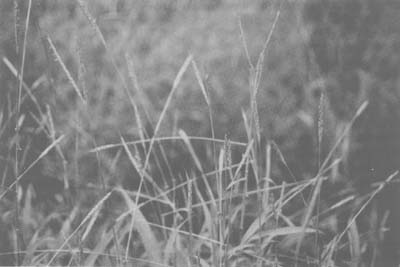
Figure 63. - Batiki grass (Ischaemum aristatum).
Panicum maximum (Guinea grass)
There are up to 500 species of the large Panicum genus which occur throughout the world in warm countries, mainly the tropics, of which P. maximum is one of the most important grazing and fodder grasses. It is an erect, vigorous, tufted perennial which can vary in height from 0.5 to 4.5 m, is very drought resistant and shows considerable variability in species and growth habit (Bogdan, 1977). Native to tropical Africa, is found particularly in East Africa, but is now widespread in India, Sri Lanka, Australia, Malaysia, Papua New Guinea, Philippines, Puerto Rico, South and Central America, West Indies and the southern part of the United States.
Based on his Australian experience Whiteman (1980) divides the P. maximum varieties into two groups:
the ‘guineas’, cvs: Riversdale, Hamil, Coloniao, Embu, Makueni and Coarse Guinea
the ‘panics’, cvs: Petrie, Sabi and Gatton.
The ‘guineas’ perform well in areas with high temperature and rainfall above 1300 mm per year. The ‘panics’ have better drought tolerance and are more suited to areas with lower rainfall (635–1800 mm per year). As pastures under coconuts in drier areas may lead to competition with trees, Payne and Smith (1975) recommend that livestock should not be kept in plantations where rainfall is less than 1500–1700 mm and/or there is a long dry season. In this situation ‘guineas’ may furnish better coconut pastures than ‘panics’.
Pastures which may be suited to the coconut environment:
a. P. maximum var. typica (Common guinea), e.g. cv. Riversdale
A tall tufted grass growing to 2 m when not grazed. Can be grown under coconuts (see Figures 64 and 65) competing with trees unless well fertilized and managed (Anon., 1971a; Ferdinandez, 1972, 1973; Guzman, 1974; Reynolds and Uati, 1976; Reynolds, 1981; Santhirasegaram, 1966a, 1966b, 1975; Santhirasegaram et al., 1969). Moderate to high forage production was obtained in Western Samoa and Thailand (Boonklinkajorn, 1978; Reynolds, 1978f). Good liveweight gains were obtained in Western Samoa (Reynolds, 1981). Recommended for coconut areas by Anon., (1971b, 1974), Chadhokar (1980a), Guzman (1974, 1975), Guzman and Allo (1975), Sajise (1973) and Santhirasegaram et al., (1969), but with reservations expressed by Plucknett (1979), Reynolds (1978f, 1981) and Steel et al., (1980) because of the competition factor, the need for good management and the problem of locating fallen nuts. Paez et al. (1994) reported on the performance of P. maximum under shade and full sunlight.
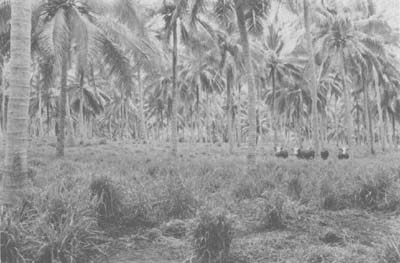
Figure 64. - Guinea grass (P. maximum) pastures under 20 year old coconuts in Western Samoa.

Figure 65. - Hereford steers on Common guinea grass (P. maximum) with Centro (C. pubescens).
b. P. maximum (Hamil and Coarse guineas)
Varieties which can grow much taller than common guinea (see Figure 66) and therefore pose similar problems. In Western Samoa yields of 15,000 kg ha-1 yr-1 of dry matter were obtained under coconuts (light transmission 50%; Reynolds, 1978f). Suited to wetter areas, are best used in non-grazing situations and in cut-and-carry systems. (e.g. Sri Lanka, Liyanage, 1991).
c. P. maximum var. trichoglume (Green panic)
A shorter, fine stemmed species. Although more suited to drier areas, Green panic
performed well under coconuts in Western Samoa (light transmission 50%, annual
rainfall 2,929 mm) giving a dry matter yield of about 8,500 kg ha-1 yr-1. It was not
recommended for general distribution because of cost and difficulty in obtaining
seed. Although Guzman (1974) and Plucknett (1979) suggest that Green panic
may be suitable for coconut environments, Weightman (1977) reported that it did
not grow well under coconut shade in the New Hebrides (Vanuatu) and was not
sufficiently competitive with weeds. The poor growth, however, may have been
due to the coralline soils rather than the shade.
Evans and MacFarlane (1990) suggest that green panic has similar (or better) shade
tolerance to guinea grass but should be more carefully grazed at lower stocking
rates (i.e., 1.8 AU ha-1 rather than 2.5 AU ha-1 in high rainfall areas). Overgrazing
or lack of regular fertilizer application leads to weed invasion and the loss of the
sown grass (Stur and Shelton, 1991). Liyanage (1991) indicated that green panic
was one of several promising species under coconuts in Sri Lanka.
d. P. maximum cv. Embu (Creeping guinea)
A fine stemmed short guinea (see Figure 67) with a prostrate creeping habit which produced over 10,000 kg ha-1 of dry matter in cutting trials under coconuts in Western Samoa (light transmission 50%; Reynolds, 1978f), just under 3,000 kg ha-1 yr-1 of dry matter in cutting trials under coconuts in the Solomon Islands (light transmission 24%; Smith et al., 1981) and liveweight gains of 366 kg ha-1 yr-1 in one non-replicated grazing trial (Reynolds, 1981). However, it was not recommended for general use because it required very good management and was unlikely to persist under heavy grazing and poor management (Mellor et al., 1973b). Evans et al. (1992) noted that it was very intolerant of heavy grazing in Vanuatu, although earlier Weightman (1977) had considered it a promising grass. Although it yielded well in a cutting trial under coconuts in the Solomons (light transmission 31%; Smith et al., 1981; Steel and Whiteman, 1980) it suffered grasshopper damage and declined in the subsequent trial years. Creeping guinea was suggested by Plucknett (1979) to be very suitable for coconut pastures. It should be noted that Creeping guinea was wiped out by virus in its native Kenya in the 1960s (Suttie, personal communication).

Figure 66. - Hamil guinea (P. maximum cv. Hamil).
Guinea grass can be propagated by seed or by parts of the vegetative rootstock (Steel et al., 1980). Planting 2–3 kg ha-1 of fresh seed with a germination of 20– 30% should give good ground cover when established. According to Chen and Hutton (1992) there are about 1.06 million seeds kg-1. It is fairly shade tolerant (Bogdan, 1977; Chen and Hutton, 1992; Eriksen and Whitney, 1977; Evans et al., 1992; Gregor, 1972; Plucknett, 1979; Reynolds, 1978f, 1981; Whyte et al., 1959, Steel and Whiteman, 1980; Guzman and Allo, 1975); does not tolerate waterlogging and is fairly tolerant of heavy grazing. It requires careful management to ensure that it does not become too rank and tall for the cattle to eat or is not grazed too short thus encouraging slow regrowth and weed invasion (Steel et al., 1980). Guinea grass should not be grazed below 15–20 cm, while some giant cultivars not below 30 cm (Plucknett, 1979). MacFarlane et al. (1991) suggest that guinea pasture height should be maintained at around 50–60 cm. Also, guinea pastures should never be more than 1.5 m high otherwise leaf and stem quality will decline (Evans et al., 1992). It is a very productive grass but yields are considerably reduced under heavy shade with high N availability. Thus Eriksen and Whitney (1977) found that in a cutting trial with 365 kg N ha-1 yr-1 Guinea dry matter yields decreased from 30–32 t ha-1 yr-1 (daylight 100 and 70%) to 23 t (daylight 45%) and about 14 t (daylight 27%). Relative yields were 100, 107, 77 and 47 whereas, where no nitrogen was added the shade factor was less important than the N factor and relative yields were 100, 120, 145 and 140 (at the same percentage daylight levels). Chen and Hutton (1992) noted that at about 50% shade, guinea can still maintain about 40% of its normal production (see Table 61).
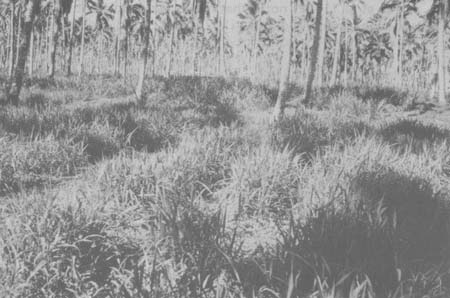
Figure 67. - Creeping guinea grass (P. maximum cv. Embu).
Table 61. - Productivity of Guinea grass (kg DM ha-1 year-1) grown under various light levels of tree crop canopies (Chen and Hutton, 1992).
| Type of canopy | <20% | 0–25% | 26–50% | 51–75% | 76–100% |
| Under Rubber | 1.0* | 3.5 | 6.1 | 8.5 | 14.5 |
| Under Coconut | - | 0.7 | 4.4 | 10.0 | 22.0 |
It mixes particularly well with C. pubescens and with legumes such as C. mucunoides, D. heterophyllum, N. wightii, L. leucocephala, M. atropurpureum and S. guianensis (Bogdan, 1977; Plucknett, 1979; White et al., 1959).
Vencedor guinea, a high yielding hybrid P. maximum selection with a high leaf-stem ratio and good tolerance of acid soils, has also been shown to have better than usual shade tolerance (Chen and Hutton, 1992). Ng (1991) found that Vencedor had the highest yield among tropical grasses at 55–80 percent light transmission
Oliveira and Humphreys (1986) demonstrated that while shade did not significantly reduce shoot yield of Panicum maximum cv. Gatton, seed yield was decreased.
In Vanuatu, Evans et al. (1992) noted that a number of farmers were prepared to incur the extra expense of establishing cv. Riversdale over Hamil in order to achieve quicker finishing of steers. As all guineas are very low in sodium, then salt blocks could be used with benefit.
It is generally suggested that unless fertilizer and good management skills are available, P. maximum should be used sparingly in the coconut-pasture-grazing situation, although it could be important for cut-and-carry systems under coconuts if due consideration is given to the harvesting and collection of coconuts. In the Philippines, Moog and Faylon (1991) reported that nut pickers and gatherers complain that when the grass is allowed to grow tall they have difficulty locating and picking nuts, and that they suffer from skin irritations and cuts from the sharp blades and hairs on the grass. Lavaka (1988) mentions that guinea grass may depress coconut yields.
Paspalum commersonii (Scrobic)
A tufted short-lived perennial species with soft and succulent stems usually growing to about 40–60 cm high (Bogdan, 1977), is suitable for areas receiving more than 900 mm of rainfall per year. Although combining well with M. atropurpureum it requires a good level of soil fertility and is not a good competitor, being invaded by weeds. Little information is available about its tolerance to shade. Although it was included in early studies in Sri Lanka B. miliiformis was found to be more promising (Guzman, 1974). In Zanzibar, although not outstanding, it formed a useful sward under coconuts (light transmission 70–80%), enabling fallen coconuts to be easily located, but evidence of weed invasion was very apparent, particularly in shady spots and to a lesser degree in open patches (Reynolds, 1983). There are more productive and shade tolerant species so P. commersonii is not recommended for coconut areas.
Paspalum conjugatum (Sour or bitter grass, sour paspalum, T or Tee grass)
A creeping stoloniferous perennial grass with prostrate stems which root at the nodes. Leaves are 5–20 cm long and 10–15 mm wide, with hairy edges, while the flowering stems are erect, 20–50 cm long and “T”-shaped (see Figure 68), which gives the grass one of its common names (Steel et al., 1980). Widespread in the humid tropics and sub-tropics, P. conjugatum grows particularly on acid wet soil of low fertility (Bogdan, 1977; Kaligis, 1991) and tolerates shade (Bogdan, 1977; Plucknett 1979; Smith and Whiteman, 1983; Steel et al., 1980; Ward and Woolhouse, 1984). Because of its shade tolerance and aggressive nature, Beetle (1974) suggests that sour paspalum makes a natural and uniform cover for plantations. According to Plucknett (1979), P. conjugatum is second only to A. compressus as a natural pasture grass under coconut and is found throughout the South Pacific coconut areas. As it is a grass of low palatability (Beetle, 1974; Plucknett, 1979), it is grazed only when young and according to Alberts and Garcia Molinari (1943) “… cattle prefer most other common grasses…”. Animals will eat P. conjugatum before inflorescences have formed but after that it is shunned because “seeds tend to stick in the throats and choke animals” (Whyte et al., 1959). Steel and Whiteman (1980) recorded dry matter yields of about 3,000 kg ha-1 in the first year of a cutting trial under coconuts (mean light transmission 31%), but the grass disappeared under grazing. Reynolds (1978f) recorded dry matter yields under coconuts of 8,500 kg ha-1 under less shady conditions (light transmission 50%) but noted that it was invaded by I. aristatum and disappeared after grazing. More productive species were noted by Smith and Whiteman (1983a) at all five light transmission sites (100, 70, 50, 40 and 20 percent), with A. compressus and S. secundatum more productive at the most shady site. Although it appears not to stand heavy grazing as A. compressus, it is still widespread in coconut (and oil palm) plantations at smallholder (Litscher and Whiteman, 1982) as well as at commercial level (Anon., 1976c; Anon., 1977b; Beetle, 1974; Boonklinkajorn, 1978; Chen and Ibrahim, 1983; Chen et al., 1978; Coulon et al., 1983; Hill, 1969; Litscher and Whiteman, 1982; Watson and Whiteman, 1981a). Regular grazing of pastures under coconuts in the Solomon Islands resulted in dominance of P. conjugatum, whereas exclusion of cattle resulted in M. pudica becoming dominant (Green and Foale, 1961). In Papua New Guinea, Brahman cattle grazed a Paspalum conjugatum/Calopogonium mucunoides pasture under coconuts at a stocking rate of 2.5 beasts per hectare (Hill, 1969). Moog and Faylon (1991) noted in the Philippines a large coconut plantation in Albay where cattle are grazed on fertilized P. conjugatum (Carabao grass) for fattening and finishing. At a stocking rate of 1 beast ha-1 grazing for 60–180 days beef animals gained 0.7–1.0 kg head-1 day-1. Deocareza and Diesta (1991) reported average daily gains (ADG) of 0.46 kg and 0.28 kg respectively (over a 238 day grazing period) on fertilized and unfertilized Paspalum conjugatum. In Sorsogon, carabao grazed on native pasture (dominated by P. conjugatum) at 1.0 AU ha-1 gave ADG of 0.14 kg and liveweight gain (LWG) of 106 kg ha-1; on native/centro pastures at 1.0 AU ha-1 ADG was 0.25 kg and LWG 185 kg ha-1 while on native/centro pasture at 2.0 AU ha-1 ADG was 0.20 and LWG 302 kg ha-1. Most significantly the P. conjugatum was grazed out on the native pastures after 51 months of grazing.
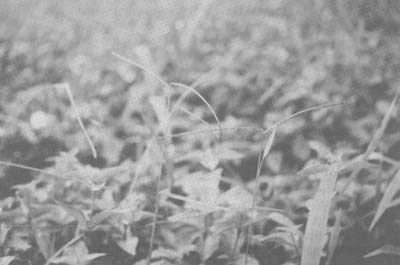
Figure 68. - T-grass (P. conjugatum).
Although P. conjugatum is low yielding with low palatability, it can grow well in areas where many other species will not perform well (e.g. poor, acid, waterlogged soils and shady, overgrazed sites). T-grass spreads by runners and seeds, the latter are sticky and easily spread on the legs of people and animals, and mixes well with hetero and Centro (Steel et al., 1980). It is not recommended for planting but may be accepted and grazed where occurring naturally. In very shady sites species such as A. compressus and S. secundatum may be more productive. In Vanuatu, MacFarlane et al. (1991) recommend a grazing height of 10–15 cm.
Pennisetum purpureum (Napier or Elephant grass)
A robust perennial forming large broad clumps (see Figure 69), spreading by stem bases rooting from nodes or by short rhizomes (Bogdan, 1977) and propagated by stem cuttings or divided rootstocks. With erect stems this vigorous and productive grass can vary from 2–6 m in height. There are a range of varieties differing not only in height but also in size of leaves, thickness of stems and flowering behaviour (Steel et al., 1980). Leaves are commonly long (50–100 cm) and narrow (15– 30 mm) with a prominent midrib and rough edges. P. purpureum grows naturally throughout tropical Africa and has now been introduced to nearly all tropical and many sub-tropical areas. It is well suited to areas with rainfall of more than 1,000 mm, but cannot tolerate flooding or waterlogged soils. Although capable of high production under open conditions (60 t ha-1 yr-1 of dry matter), and somewhat shade tolerant (Guzman and Allo, 1975; Plucknett, 1979), Napier is not really suited for general use under coconut due to the difficulties of grazing, management and locating fallen nuts, and because its excessive demand for nutrients and moisture causes competition with coconut palms unless heavy rates of fertilizer are applied. However, its potential for rapid growth and high yields and its drought tolerance (Whyte et al., 1959 report that its root systems can extend down to 450 cm) mean that it is ideally suited to zero grazing and for use as a fodder or cut-and-carry crop (Guzman and Allo, 1975; Plucknett, 1979; Whiteman, 1980). Although it has been suggested that it is not shade tolerant (Evans et al., 1992; Steel et al., 1980), Reynolds (1978f) obtained dry matter yields of 8500 kg ha-1 (under coconuts, light transmission 50%), suggesting some shade tolerance. He recommended that Napier could be used for small intensive forage production areas under high fertilizer applications, but preferably in the less shady areas of plantations (light transmission > 80%) to obtain best results. In fact some authors argue that this fodder crops system is much preferable to the use of grazed fertilized pastures under coconuts. Lane (1981) notes that with good management yields of about 65 t (fresh weight) ha-1 yr-1 are obtained in Sri Lanka from fodder grasses such as NB21 P. purpureum × P. americanum hybrid and P. maximum cv. Hamil on a cut-and-carry system. Such fodder production under coconuts can form the basis for integrating a dairy or cattle fattening enterprise into a multiple cropping farming system, allowing crop by-products such as banana residues, cassava tops and peelings and sweet potato vines to be fully utilized while producing valuable manure. The work of Eriksen and Whitney (1981) in Hawaii demonstrated that Napier grass produced > 80 percent of full sunlight yields under shade conditions (45 percent sunlight) under both high (365 kg N ha-1 yr-1) and low (0 kg N ha-1 yr-1) N fertilizer applications. This suggest a higher shade tolerance than indicated by other authors. Although usually cultivated alone it can be grown with vigorous climbing legumes such as Puero or Centro or in alternating rows with Leucaena (Steel et al., 1980; Reynolds, 1979). In Australia cv. Capricorn is used, while in Zanzibar under coconuts cv. Ghana (Gold Coast) derived from Malawi was outstanding (Reynolds, 1983), outyielding the local variety by over 80%, whereas the Hawaiian hybrid, cultivars from Kenya, Moshi (mainland Tanzania) and Morogoro (mainland Tanzania) outyielded the local variety by 45%, 17% and 9% respectively (Aii, 1985). In Western Samoa, the Hawaiian hybrid (Napier 3418 from a cross of U.S.D.A. 1915 Import Napier and U.S.D.A. Merker) was demonstrated to be superior to a ‘local’ variety (Reynolds and Sini, 1976). Other well known cultivars are Merker, Mineiro, Uganda, Cubano, Domira, Panama, Pungwe and Urukwanu (Bogdan, 1977).
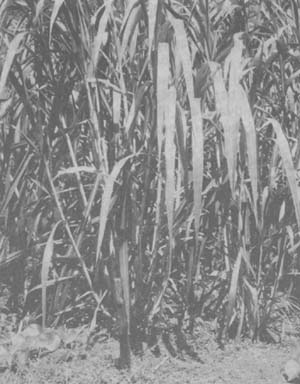
Figure 69. - Hawaiian hybrid napier or elephant grass (Pennisetum purpureum) - 90 days after planting.
Setaria sphacelata var. sericea (Setaria)
Setaria sphacelata cv. Splenda (Splenda Setaria)
Setaria generally forms a dense tussock and spreads by short rhizomes. Leaves can be up to 40 cm long and 8–20 mm wide but considerable variation in leaf width and plant height can occur. Flowering stems reach 1.5 to 2.0 m in height and terminate in a dense, spikelike, orange-brown seed head, which is usually 20–25 cm long (Evans and MacFarlane, 1990). Originating in the tropical regions of Africa (especially East and South Africa) it grows well in areas with rainfall in the range of 900–1,825 mm (Skerman and Riveros, 1990). In Vanuatu, Evans et al. (1992) suggest that Kazungula setaria should be used more in the > 2,500 mm rainfall zone. Setaria sphacelata is also known as Setaria anceps and has a number of cultivars - Nandi, Kazungula, Solander, Narok and Splenda. Kazungula and Splenda are better adapted to the wet tropics and Splenda has been very effective in competing against Navua Sedge in low-lying (wet) environments in Fiji (Evans and MacFarlane, 1990). Splenda setaria is a tall robust perennial which has broader leaves and longer flower spikelets then other cultivars, with flowering culms which can reach 2.8 m in height and is adapted to the high rainfall tropics and sub-tropics. Setaria shows some tolerance to waterlogging but little shade tolerance according to Evans et al. (1992) and moderate shade tolerance according to Hacker and Williams (1993). It combines well with legumes such as Siratro, glycine and greenleaf desmodium and has high digestibility and acceptability by stock. Usually established by seed (1.5 kg ha-1) into a well prepared seed bed; it can also be established from rooted cuttings or divided root stocks as in the Philippines (Skerman and Riveros, 1990). Hacker and Jones (1969) suggest that fresh seed should be stored for two months before use. Setaria yields can be high (11–59 t DM ha-1 year-1 in Australia; over 20 t DM ha-1 year-1 in Fiji; over 40 t fresh herbage ha-1 yr-1 in India and over 70 t fresh herbage ha-1 yr-1 in Brazil - Bogdan, 1977) and it withstands relatively heavy grazing to produce liveweight gains in the range of 190–330 kg ha-1 year-1 in Kenya and over 500 kg ha-1 yr-1 in Australia with 330 kg N ha-1. All setarias are high in oxalates and are therefore unsuitable for horses (Evans et al., 1992).
In Vanuatu, MacFarlane (1993) suggests that there is growing interest in cv. Kazungula and cv. Splenda (see Figure 70) because of their superior cool season production compared with Signal. “The only commercial dairy ….. is committed to increasing its area of Splenda because of milk production of 1.5 I cow-1 day-1 higher than on Signal grass pastures”.
In North Sulawesi, Kaligis and Mamonto (1991) reported that in a trial under coconuts (75% light transmission) S. sphacelata cv. Splenda had the lowest proportion of leaf of all species tested and although having a high digestibility in the young regrowth, had low intake, especially in the 12 week-old regrowth.
In view of its moderate to poor shade tolerance it is likely to be confined to old widely spaced coconut plantations with very high light transmission in the range 80–100 percent although Kaligis et al. (1995) found that it yielded well under coconuts in North Sulawesi at 55% light transmission. That it does have a role under coconuts is clear from reports from the Philippines where Subere and Gerona (1986) found it to be one of the highest producing grasses and where Parawan (1991) noted that it gave good yields under coconuts in Western Mindanao along with B. decumbens and B. humidicola. In Sri Lanka, Jayawardana (1988) rated it as a fodder grass with guinea and Wong (1989) included it as one of a number of species suited to the open conditions of old coconut plantations in Malaysia. Because of its erect growth habit Kaligis et al. (1995) suggest that it may be more suited to cut-and-carry feeding systems.
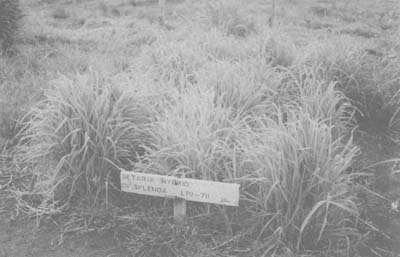
Figure 70. - Setaria sphacelata cv. Splenda.
Stenotaphrum dimidiatum (Pemba grass)
A creeping stoloniferous perennial (see Figure 71) similar in habit to S. secundatum but has slightly wider, bright green leaves (Bogdan, 1977). It spreads by branched rhizomes and stolons and is native to the coastal districts of tropical East Africa, Madagascar, India and the islands of the Indian Ocean. According to Bogdan (1977) and Whyte et al. (1959) it is well grazed and has given encouraging results in Madagascar, Uganda and Zanzibar. It is certainly highly tolerant of shade and very competitive. In Zanzibar it was observed to grow in very shady conditions, formed good associations with Teramnus labialis (see Figure 72), formed useful mixtures with introduced C. pubescens and S. guianensis cv. Schofield (Reynolds, 1983) and was tentatively estimated to produce between 5,000 and 6,000 kg ha-1 yr-1 of dry matter (with a crude protein level of about 11.5% in the first two or three weeks of regrowth) under coconuts with a 70–80 percent light transmission (Reynolds, 1982a).
In Mauritius, on the Agalega Islands, Cook (1990) identified S. dimidiatum as perhaps the most valuable grass on the coralline soils, but noted that there was an absence of the usual legumes such as Desmodium canum and D. triflorum.
Stenotaphrum secundatum (Buffalo Couch or St. Augustine grass)
A creeping stoloniferous perennial with upright or ascending stems 10–15 cm high and flat, blunt, glabrous leaves (see Figure 73), slightly bluish in colour, 3–15 cm long and 4–10 mm wide (Bogdan, 1977). It spreads by long creeping stolons and rhizomes which form a dense turf. It is found on coastal areas of Africa, Central and South America, West Indies, India, Australia and in the Pacific Islands where it has been used in Vanuatu under coconuts for many years. Walker (1992) indicates that Stenotaphrum secundatum is one of a number of natural grass species present in Seychelles, growing particularly on coralline areas and combining well with legumes, especially Desmodium species such as Desmodium canum and D. triflorum. Growing in relatively humid areas, it prefers fertile rather than poor, sandy soils (Plucknett, 1979). Although tolerating a degree of flooding and soil salinity it does not perform well on soils with a high ground water table.
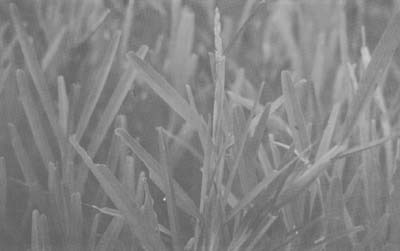
Figure 71. - Pemba grass (S. dimidiatum).

Figure 72. - Pemba grass with the legume T. labialis.
The grass is propagated vegetatively by pieces of stolon, responds well to N fertilization and was found to be the best adapted species in heavily shaded sites in the Solomon Islands (Smith and Whiteman, 1983a). It was described as competitive (giving good weed control), palatable to cattle and capable of supporting heavy stocking rates at moderate levels of animal production (Weightman, 1977). MacFarlane and Shelton (1986) indicate that in open and shaded areas in Vanuatu, buffalo grass displays exceptional competitive ability with weeds due to its dense, prostrate habit and tolerance of heavy grazing (see Figure 74). Under heavy shade it is more productive and vigorous than carpet or T-grass and combines well with native legumes Desmodium canum and Mimosa pudica. It also combines well with Vigna hosei (Stur and Shelton, 1991). Berges et al. (1993) emphasize its ability to grow under heavy shade especially on smallholder plantations in Vanuatu. In North Sulawesi, Kaligis et al. (1995) reported that it yielded consistently well (light transmission 55%) and formed persistent associations with Arachis glabrata. Mullen and Shelton (1995) suggest that because of its dense sward-forming habit it combines less well with legumes than some other grass species.
A grazing trial in Vanuatu, under a thin stand of coconuts (41 ha-1) where Buffalo-Siratro pastures produced projected annual liveweight gains between 275 and 400 kg ha-1, was described by Plucknett (1979). According to Evans and MacFarlane (1990) the maximum recorded growth rate of 350 kg steers on buffalo grass with native legumes was 0.45–0.05 kg head-1 day-1. Evans et al. (1992) suggest that (in Vanuatu) there is considerable scope to improve the productivity of buffalo pastures by oversowing and vegetative planting of adapted and productive native and recently introduced legumes. Provided there is 20% + legume content, buffalo pastures can produce at least 0.5 kg head-1 day-1. Generally in open or lightly shaded pastures growth rates are in the range of 0.35–0.40 kg head-1 day-1. MacFarlane et al. (1991) recommend a grazing height of 10–15 cm. Because of its high sodium content the use of buffalo grass, along with a range of other species, may reduce the need to provide Na supplements to meet the grazing animal's sodium requirements. (Koronivia grass consistently also has moderate to high Na levels, whereas Signal, guinea, carpet and T-grass consistently have low levels - Evans et al., 1992).
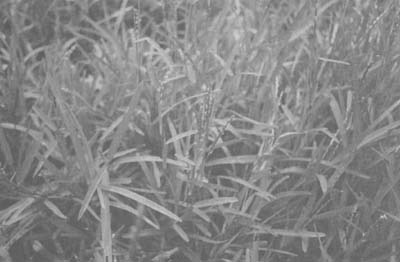
Figure 73. - Buffalo grass (Stenotaphrum secundatum).
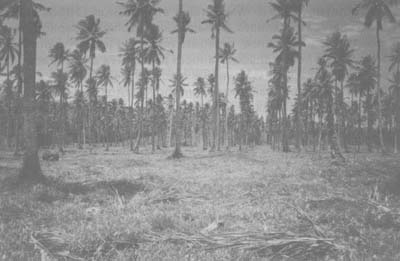
Figure 74. - Well grazed buffalo grass (Stenotaphrum secundatum) under old coconuts, Vanuatu.
However, in another report from Vanuatu (Anon., 1978c) the productivity of Buffalo grass, in coconut plantations with a palm spacing of 9 m2, was comparatively low, carrying only one to two head of cattle per hectare. This stocking rate must be further reduced in the dry season, since Buffalo grass is sensitive to lack of water. Mendra et al. (1995) noted that it demonstrated poor drought tolerance in Bali. Although the young growth is very palatable, the grass, maturing very rapidly becomes unpalatable, therefore it should be grazed hard at 12–14 day intervals. Reynolds (1983) reported similar findings for S. dimidiatum in Zanzibar. MacFarlane and Shelton (1986) indicate that the fattening potential of buffalo grass under coconuts is similar to open carpet grass pastures i.e. finishing steers grazing these pastures at 1.5 animals ha-1 gain at the rate of 165 kg ha-1 yr-1 and successfully reach export quality only after 3.5–4 years of age. S. secundatum is recommended in the Solomon islands for coconut sites (light transmission 30–50%) on poor fertility soils. Certainly both S. dimidiatum and S. secundatum should be considered for such shaded sites in all coconut areas but studies are still needed to examine the effects on copra yields, the grass-legume balance and whether or not the establishment is justified in terms of cost in relation to the likely improvement of liveweight gains compared to existing pastures (Smith and Whiteman, 1983a).
Tripsacum laxum (Guatemala grass)
A tall (3–4 m) leafy perennial (see Figure 75) spreading by short stout rhizomes to form large clumps or stools (Whyte et al., 1959). The leaves are hairy and large, 50–100 cm long and up to 10 cm wide. Guatemala grass is propagated by stem cuttings or pieces of root stock; grows well on deep fertile soil; produces high forage yields with a high proportion of leaf and a high feeding value which does not decline rapidly with age (Steel et al., 1980). A native of Guatemala the grass is now widely used as a fodder plant in South and Central America, the Caribbean, Ghana, Ivory Coast, Kenya, Madagascar, Sri Lanka and some of the Pacific Islands (Bogdan, 1977; Whyte et al., 1959). It is best used as a cut-and-carry fodder source as it is shallow rooted and can be easily uprooted by grazing cattle. It shows moderate shade tolerance (good growth under coconuts with light transmission 70–80%), but is less drought tolerant and less productive than Napier grass, therefore the latter is usually preferred (Reynolds, 1983). However, it has been suggested that with reasonable management, stands of T. laxum may persist longer (Whyte et al., 1959).
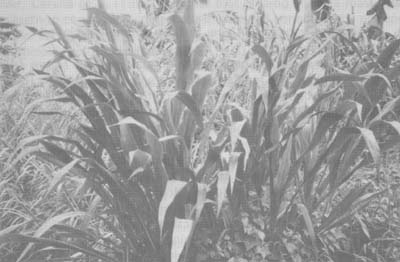
Figure 75. - Guatemala grass (Tripsacum laxum).
Urochloa mosambicensis cv. Nixon (Sabi grass, little para - Fiji)
A perennial, stoloniferous plant with a low growth habit distinguished from the annual grass Urochloa panicoides by the more pointed glumes and scales surrounding the seed (Evans and MacFarlane, 1990). It is native to the dry tropics of Africa (400–800 mm rainfall) but grows in areas with rainfall in the 500–1,200 mm range with lengthy dry seasons. Noted for its drought tolerance it will grow on a range of soils but is not usually found in poorly drained areas or on soils subject to flooding. In Vanuatu it is well adapted to shallow coasted soils and deep soils in rain shadow areas and maintains much more green leaf through the dry season than Signal grass (Evans et al., 1992).
A sowing rate of 4 kg seed ha-1 is recommended (Bogdan, 1977) into a well prepared seed bed (seed should be stored for 6–12 months before use to improve viability - Skerman and Riveros, 1990). Sabi grass establishes quickly, can withstand close grazing and is compatible with Stylosanthes humilis (Townsville stylo), Stylosanthes hamata (Verano stylo) and Siratro. It is more palatable than Signal and Koronivia and competes well with weeds. It has been reported to do well in Thailand (11,245 kg ha-1 yr-1 with legumes and native grasses of which Sabi was 1,561 kg), India (4 t DM ha-1 yr-1), Australia (830–6, 520 kg DM ha-1 yr-1) and Fiji (18 t of fresh material) and under set stocking of 1 beast to 0.3–0.6 ha in Australia (with S. humilis) liveweight gains of up to 450 kg ha-1 yr-1 have been reported (Austin, 1970). Over a three year period at 1 beast to 0.4 ha liveweight gains stabilized just below 390 kg ha-1 yr-1. Evans et al. (1992) indicate that Sabi grass has good shade tolerance in old coconut plantations where light transmission is greater than 70 percent. Further work is required to assess the role of Sabi grass in the coconut environment but at present it would appear to have a role in old plantations where light transmission is greater than 70 percent, where lengthy dry periods are experienced and where annual rainfall is marginal for good coconut growth (i.e., <1,200 mm). MacFarlane (1993) stresses that in open and lightly shaded situation in the 1,200–1,800 mm rainshadow belt on the west and north-west sides of many islands in Vanuatu, and on shallow, recently uplifted coralline soils regardless of rainfall, Koronivia or Sabi grasses are preferred because of drought and high soil pH tolerance, often with L. leucocephala. The influence of pastures on coconut yields would need carefully to be assessed in such marginal areas.